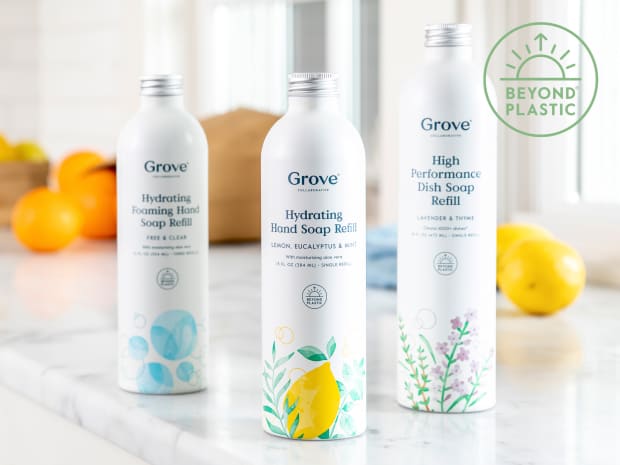
14 best products for shifting from plastic to aluminum.
We've pulled the 14 best products in aluminum packaging that have been top-rated by Grove members.
Read More


Last Updated: January 11, 2022
Following along for detailed instructions on how to recycle and dispose of your packaging responsibly from the Sustainability team here at Grove.
Recycling is far from a perfect solution—instead, it’s one that requires water, energy, and prevents plastic from ending up in landfills temporarily, as plastic can only be recycled 2–3 times at most.
This is why at Grove we’re setting a goal to be plastic free by 2025 because only 9% of plastic gets recycled, no matter how much you put in your recycling bin. Moving into reusable, refillable, and truly recyclable materials and packaging (that have a much longer life span) is the only path forward for the products we offer. Because clean hair shouldn’t require packaging that lasts 500 years, right?
Read on to learn more about how to recycle different types of packaging from plastic to glass to aluminum and paper so that your efforts actually make a difference.
Want to know 11 things you definitely can’t recycle? Read our guide on products you shouldn’t throw in the recycling bin.
Grove Tip
Remember that recycling is super local and depends on your waste and recycling provider. We’ve put together this guide—but the best thing to do is to search “Recycling guide + ZIPCODE” or go directly to your recycling provider’s website to learn what they can and cannot accept.
Here’s a quick rundown provided by our friends at Almanac.com of what the plastic recycling numbers actually mean (and if they can be recycled):
#1: This type of plastic is called polyethylene terephthalate (PETE or PET). This is usually the type of plastic used in water or soda bottles, salad dressing bottles, microwavable food trays, and other harder plastics. It can commonly be recycled (if plastic recycling is available in your community) and made into carpets, furniture, or new containers.
#2: This type of plastic is called high-density polyethylene (HDPE). It is typically found in cleaning or shampoo bottles as well as milk or yogurt containers. It can sometimes be recycled into floor tiles, detergent bottles, fencing materials, or even pens.
#3: This type of plastic is vinyl (V or PVC). It is typically found in mouthwash or cooking oil bottles and clear food packaging or clear containers. It is unlikely it will be recycled because it does contain toxins; however, it can be made into cables or paneling (things that won’t be used to eat off of, etc.).
#4: This type of plastic is low-density polyethylene (LDPE). It is found in carpet, furniture, clothing, and soft plastic bags used for bread or other foods. It could be recycled into envelopes, floor tiles, or trash can liners, but isn’t likely.
#5: This type of plastic is polypropylene (PP). It is found in ketchup and syrup bottles, medicine bottles, and plastic drinking straws. It may be recycled into brooms, ice scrapers, and rakes.
#6: This type of plastic is polystyrene (PS). It is typically found in disposable plastic cups, plates, and silverware, plastic egg cartons, and plastic take-out containers. It can sometimes be recycled into foam, insulation, rulers, or lightswitch plates.
#7: This type of plastic is anything categorized as other or miscellaneous. Water jugs, nylon, some food containers not categorized with a number above, and other miscellaneous items may be #7 plastics. This rarely get recycled and if they do they are turned into custom-made items by specialty companies.
Not everything is recyclable unfortunately (Remember that link above!), but what we can recycle actually needs a little TLC before it hits that recycling bin out front.
Here are a few tips to make sure your recycling gets to the plant (and not discarded to the landfill because you didn’t prep it correctly).
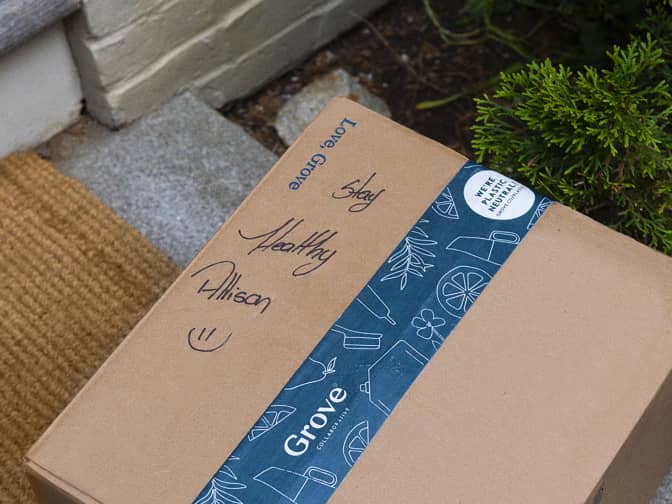
Cardboard and paper packaging can be recycled 5–7 times before it becomes unusable. It is commonly recycled in most places in the U.S. so your local recycling supplier should take these items in your curbside bin. (Remember to double check on their website!)
Tips for recycling cardboard and paper so it’s clean

Glass is amazing because it can be recycled an infinite amount of times, yay! However, not every recycling program in the U.S. recycles glass, so you’ll need to look up whether your curbside service takes it.
Tips for recycling glass so it’s clean

Aluminum is also infinitely recyclable which is why we at Grove use it as packaging for a lot of our soaps and detergents.
It is also a commonly recycled item in the U.S. so most curbside pickup services should take it.
Tips for recycling aluminum
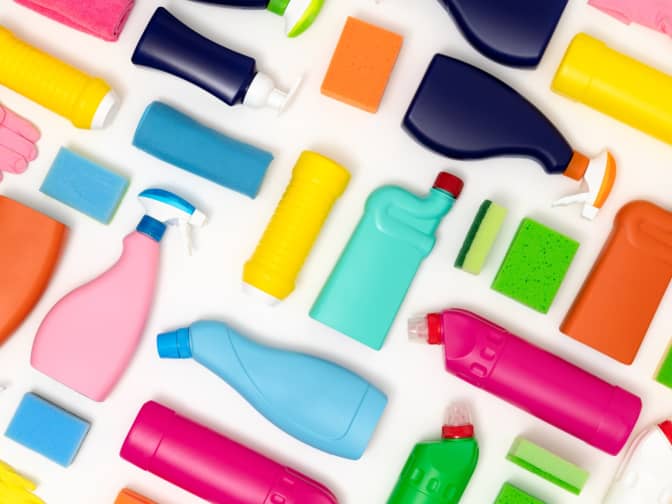
Again, we prefer packaging in the forms above over any items in plastic because plastic is harder to recycle and can only be reused about 2–3 times before it ends up in the landfills anyways.
The most commonly recycled plastic in the U.S. is Plastic #1—(PET, plastic water bottles). However, we have some tips below on how to recycle this type of plastic and others so that some of it has the possibility to be reused.
Tips for recycling plastic
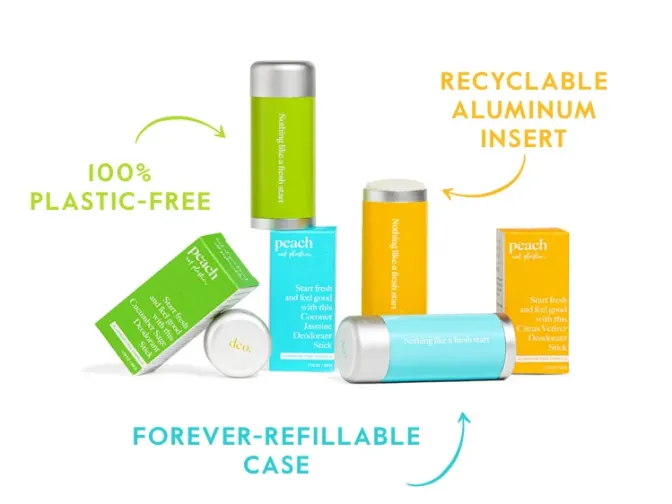
U.S. companies make 76 million pounds of plastic every day, but only 9% of plastic is recycled. At Grove, we think it's time to stop making plastic. How are your shopping habits contributing to the Earth's plastic pollution?
Peach Not Plastic is removing plastic from personal care with innovative hair, face, and body care. Try it and help us continue to remove plastic from our oceans!

We've pulled the 14 best products in aluminum packaging that have been top-rated by Grove members.
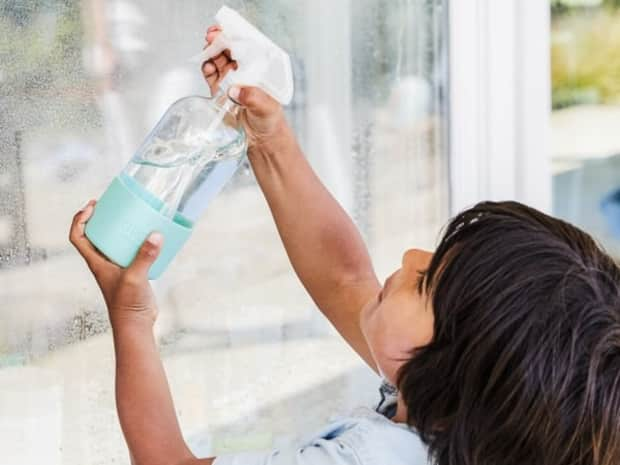
We've pulled the 19 best products with glass packaging that have been top-rated by Grove members.
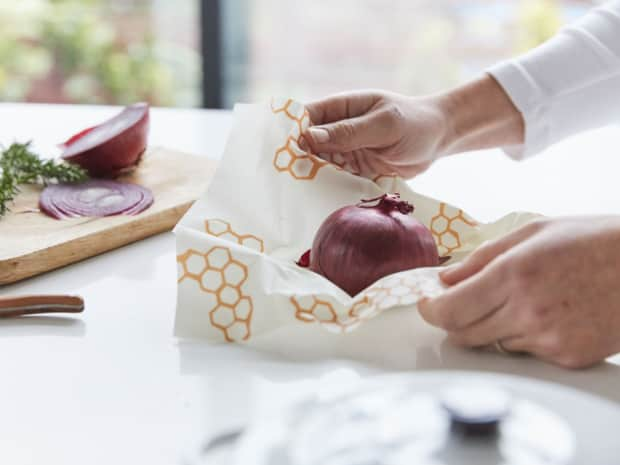
With these reusable equivalents, you can kiss those single-use trash monsters goodbye.
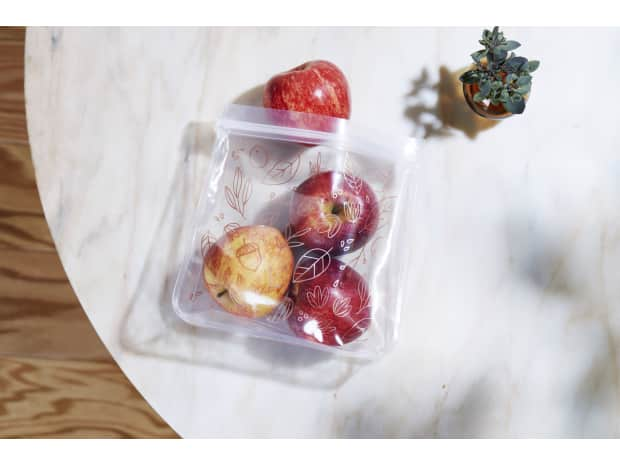
We've pulled the top 26 best reusable food storage containers and bags determined by Grove members.